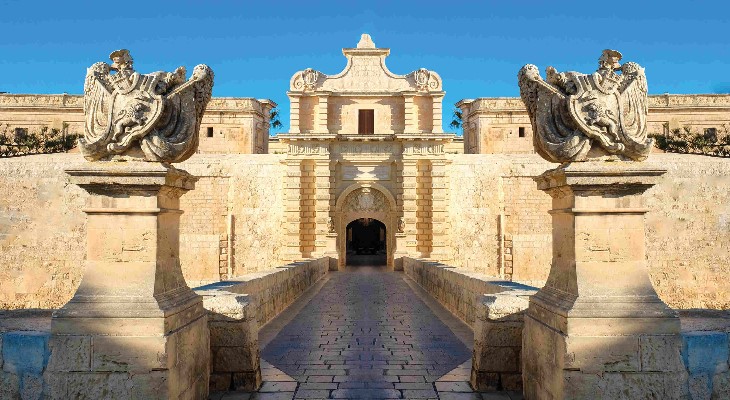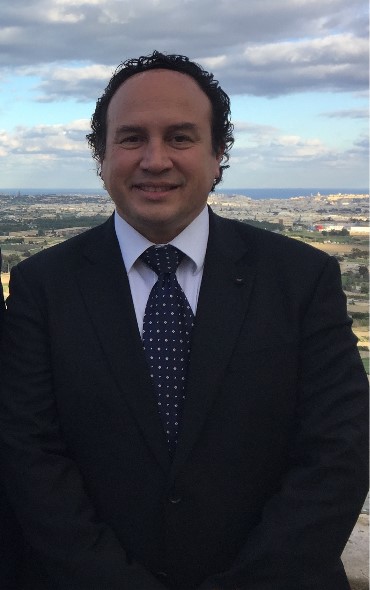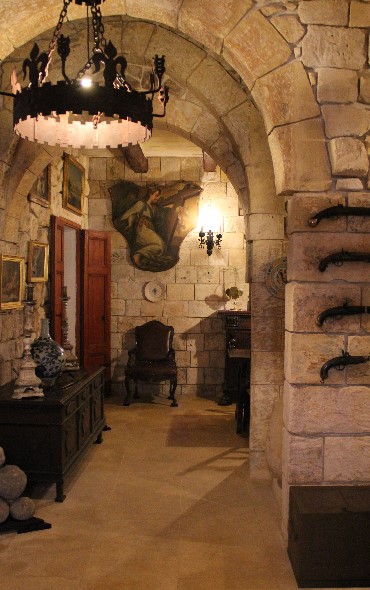What is it like to live in a medieval fortified city that happens to be one of the most popular tourist attractions on the island?

It’s 6am, and Malta's Silent City is waking up to the sounds of the first delivery vans, bringing in supplies to the restaurants, cafes and the five-star hotel within the fortifications. They have a small window till 10:30am, before all service vehicles have to leave to make way for the daily influx of tourists, cameras at the ready, who wander not so silently through the historic streets.
A hawker arrives at 8am for just one hour to sell newspapers and other daily essentials to the residents - a small blessing for Mdina’s ageing population, organised by the local council after the last grocer closed down 10 years ago.

Peter Sant Manduca
For Mdina mayor Peter Sant Manduca, whose family have lived in Mdina for seven generations, those early hours of the morning are his favourite time of day, when the residents meet each other as they go about their daily business. as if this were just any other 'normal' town or village.
But there is nothing normal about this city. This is Mdina, one of the most popular tourist attractions on the Maltese Islands, among the most loved of Malta’s treasures. Of the 2.3 million tourists who visited Malta last year, it’s safe to assume that the large majority of them included Mdina on their holiday itinerary. And that’s on top of the many locals who regularly pop over for tea and cake, dinner, a wedding, festival or simply for a relaxing stroll. Add to that the 500 people who work there. That’s a lot of activity for an area of just 0.9km2 and an overwhelming amount of people for just 250 residents.
And yet, for the inhabitants of Mdina, there is no other place they would consider living. “It is very special to live in Mdina,” admits Peter. “I would never move from here, and I am sure that is the same for many of the residents. Mdina is like the front garden to my house.”
As for that Silent City moniker, that was originally coined in the post-war years when World War II refugees from the harbour area who had moved to Mdina for safety left en masse to return to their homes, thus leaving the city quiet. Of course, that nickname may not be so relevant today, but it has found its permanent place in local tradition.
Peter remembers a time when Mdina was bustling with the cheers of children playing in the streets, when its historic houses and palazzos were populated with young families. “I have seen Mdina change tremendously since my childhood,” says Peter. “It was always a popular place, but today it has become much busier, welcoming thousands of visitors every day. Back in the 1960s and 1970s there were far more residents, and most of them were families with young children. We were always out playing in the streets. You could pick up a game of football with the neighbouring kids in any street in Mdina on a Saturday morning. Today we have an ageing population. There are hardly any children living here at all.”
Juggling the pros and cons of living in Mdina is part of daily life for Peter and his neighbours. On the plus side, Mdina is beyond special. “There is only one Mdina and we are very lucky to have it, all intact,” enthuses Peter, who admits he loves every bit of the city. “Every single corner and angle has its beauty. The main road has a lot of baroque buildings which are so beautiful. The side streets have their splendour. There is no street like any other, and every corner has its magic.”

Peter Sant Manduca's house
The flip side of that “magic” is that those beautiful historic buildings, with the ground floors dating back to the 13th and 14th centuries and their slightly younger first floors built in the 16th and 17th centuries, may not be so suited to modern living. “I enjoy the historical element of my house but these houses, some of which date back to the medieval period, are dark, humid, have no gardens or only a small yard. Installing mod cons can be expensive, as you have to be sensitive to the architectural heritage. You have to look after the fabric of the building,” admits Peter.
“The main road has more traffic, be it people or vehicles. The squares are always busy and noisy. The narrow streets echo the footsteps of people walking through them, so it feels like they are walking through you bedroom,” he continues. Not such a silent city after all then.
But it never really was the case. Even though the number of residents has fallen, their relatives are given special permits to drive in to visit. Ironically however, cars are not the city’s biggest problem. Horse drawn cabs cause more infrastructural damage with the steel rims of their wheels. Mdina local council was the only locality on the Maltese Islands to pass a bylaw stipulating that horse drawn cabs would only be allowed in Mdina if they had rubber wheel rims and rubber hooves.
Still, the horses are not the only ones to blame for the deterioration of the paving stones. All those thousands of pairs of feet are taking their toll on the road surface. In an ancient place like this, restoration is an on-going and never-ending process.
With tourist-related business booming, Peter, as mayor of Mdina and a businessman himself, is philosophical about tourism. “I don’t really believe in restricting tourists because there is a certain bread-and-butter issue here at stake. It would be nicer to have less visitors, but that is the price to pay when you have a city that is beautiful and everyone wants to see it. It is unavoidable,” he says, adding that he would welcome the introduction of tourist police to help usher crowds through different streets during delivery times in the morning and afternoon.
The council also tries to restrict the number of events held within the city walls out of respect for the residents, although weddings at the cathedral remain popular throughout the year.
With some 10 per cent of the properties lying empty, the council fears that these unused buildings could fall into disrepair. “We would rather see buildings being converted into residential homes but prices are so expensive here. The tendency is for buildings to be used as a business concern. At least the building is being utilised in some way,” remarks Peter.
Ultimately, the key to survival in this tiny fortified city is to strike a balance between the residents’ requirements, business interests and tourists’ needs. “We need to try not to annoy each other and to live in harmony together,” says Peter. We hear you!